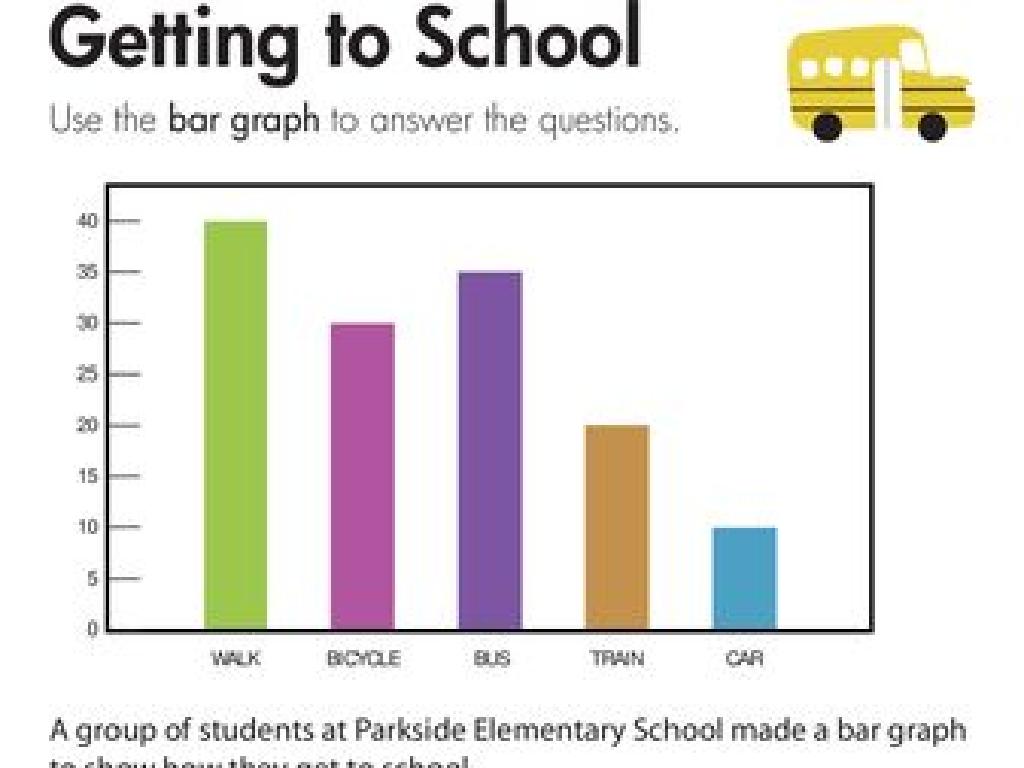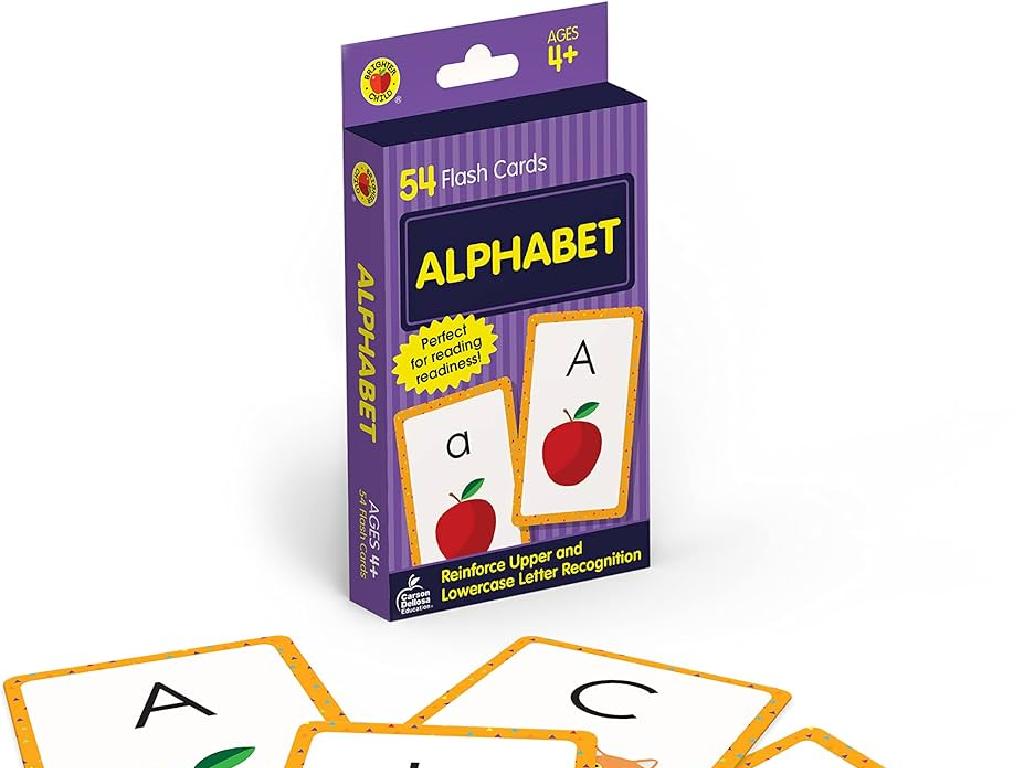Read About Animals
Subject: Language arts
Grade: Fifth grade
Topic: Informational Texts: Level 1
Please LOG IN to download the presentation. Access is available to registered users only.
View More Content
Today’s Adventure: Reading about Animals!
– Explore informational texts
– Informational texts provide facts and details.
– Importance of reading these texts
– They help us learn and understand the world.
– Discovering animal facts
– Find interesting animal behaviors and habitats.
– Enhancing knowledge and vocabulary
– Learn new words and concepts about animals.
|
This slide introduces students to the exciting world of informational texts with a focus on animals. Informational texts are structured writings that provide factual information on a variety of topics. Emphasize the value of reading to gain knowledge, with a special spotlight on how it helps us understand the animal kingdom better. Encourage students to think about how learning animal facts can be both fun and educational, leading to a broader vocabulary and a deeper understanding of the natural world. Discuss how this knowledge can be applied in other subjects and in everyday life. Prepare to engage the students with examples of informational texts about animals and discuss the unique facts they can learn from them.
Exploring Informational Texts About Animals
– Define Informational Text
– A factual writing that provides information on a specific topic.
– Examples of Informational Texts
– Textbooks, articles, and manuals are some examples.
– Compare with other writings
– Informational texts are fact-based, unlike fiction which is imaginative.
– Focus on animal texts
– We’ll look at how these texts give us facts about animals.
|
This slide introduces the concept of informational texts, which are a cornerstone of non-fiction writing. It’s important for students to understand that these texts are meant to educate and inform about real-world topics, using facts and data. Provide examples like encyclopedias, user manuals, and news articles to illustrate. Then, contrast informational texts with fiction, focusing on the intent to inform versus entertain. Highlight the use of informational texts in learning about animals, which can include their habitats, behaviors, and conservation status. Encourage students to think of questions they have about animals that can be answered through informational texts.
Features of Informational Texts About Animals
– Understanding Headings & Subheadings
– They organize the text & preview main ideas.
– Importance of Captions
– Captions explain pictures or diagrams, adding more info.
– Using Glossary and Index
– A glossary defines words; an index helps find topics quickly.
– Navigating Tables of Contents
– It outlines the major parts of a book & helps find information.
– Learning from Maps & Charts
– Maps show locations; charts compare facts about animals.
|
This slide introduces students to the different features of informational texts, specifically in the context of reading about animals. Headings and subheadings help readers understand the structure of the text and anticipate what they will learn about. Captions provide additional details about visual elements, enhancing understanding. The glossary and index are critical tools for learning new vocabulary and efficiently locating information. The table of contents gives an overview of the text’s structure, making it easier to navigate. Lastly, maps and charts offer visual representations of data, which can be especially engaging when learning about animal habitats and behaviors. Encourage students to use these features actively as they read to improve comprehension.
Exploring the Animal Kingdom
– Discovering different animal classes
– Mammals, reptiles, birds, fish, and insects have unique characteristics.
– Understanding habitats and adaptations
– Animals live in various habitats and have adaptations to survive in them.
– Exploring diet and survival strategies
– Animals have different diets: herbivores, carnivores, omnivores.
– Learning about conservation status
– Conservation status tells us if an animal is endangered or thriving.
|
This slide introduces students to the diversity of the animal kingdom, covering the main classes of animals and their distinctive features. Discuss the importance of habitats and how animals adapt to their environments for survival. Highlight the variety of diets among animals and how this affects their role in the ecosystem. Finally, explain the concept of conservation status and its significance in protecting animal species. Encourage students to think about how human activities impact animals and their habitats. Provide examples of conservation efforts and discuss ways we can help protect wildlife.
Reading Strategies: Exploring Animal Texts
– Skim and scan for animal facts
– Quickly glance through headings, images, and summaries to find interesting animal information.
– Make annotations on key points
– Use a pencil to underline or highlight important details about animals’ habitats or diets.
– Ask questions about animal behavior
– While reading, think: Why do animals live in groups? How do they find food?
– Summarize each paragraph
– Write a short recap of what each section told you about the animal.
|
This slide aims to equip students with effective reading strategies tailored for informational texts about animals. Skimming and scanning allow students to locate specific information quickly, such as animal characteristics or habitats. Annotations help students to remember and connect with the material by marking important facts. Encouraging students to ask questions engages them in active reading and deepens their understanding of animal behaviors and adaptations. Summarizing helps students to distill the main ideas of each paragraph, reinforcing comprehension. These strategies will be practiced with a focus on informational texts about animals, enhancing students’ ability to extract and retain knowledge from their reading.
Let’s Read Together: Exploring Animal Passages
– Read a passage about an animal
– Find the main idea and details
– What’s the passage mostly about? Look for key details that support this main idea.
– Discuss and understand new words
– Come across a tricky word? Use the words and sentences around it to figure out what it means.
– Use text features effectively
– Titles, headings, and captions can help you locate information quickly. Practice using them!
|
This slide is designed to guide students through a structured reading session focused on animals. Students will start by reading a short passage about a specific animal. They should then work on identifying the main idea of the text, supported by key details they find. Encourage them to highlight or note down any unfamiliar words and use context clues from the surrounding text to infer meanings. Lastly, emphasize the importance of text features such as titles, headings, indexes, and captions, and how these can be used to find information quickly and efficiently. The teacher should prepare a list of passages about different animals, ensuring they are appropriate for the fifth-grade reading level, and have clear text features. During the next class, students can share their findings and discuss the strategies they used to understand the text.
Class Activity: Animal Research Project
– Choose an animal for research
– Gather facts from texts
– Use books, articles, and websites to find information
– Create an animal fact sheet
– Include habitat, diet, and fun facts
– Present facts to the class
|
This activity is designed to enhance students’ research skills and their ability to extract information from texts. Students should select an animal they are interested in and use various informational texts such as books, articles, and credible websites to gather facts about their chosen animal. Encourage them to look for details about the animal’s habitat, diet, behavior, and any interesting or unique characteristics. Once they have their information, students will create a fact sheet that organizes these details in an engaging way. This can include pictures, diagrams, and bullet points. Finally, students will present their fact sheet to the class, practicing their public speaking and sharing knowledge with their peers. For the teacher: Prepare a list of suggested animals, ensure access to research materials, and provide a template for the fact sheet to guide the students.
Conclusion & Reflection: Animal Insights
– Recap on informational texts
– Informational texts provide facts and details about real-world topics.
– Connecting texts to the world
– Understanding texts helps us grasp complex concepts about animals and their habitats.
– Share an interesting animal fact
– Each student thinks of one fact about animals from today’s lesson to share.
– Reflect on today’s learning
|
As we wrap up today’s lesson, let’s reflect on what we’ve learned about informational texts, specifically about animals. These texts are crucial for gaining accurate knowledge and understanding the intricacies of the animal kingdom. By learning how to extract information from these texts, students can better comprehend the world around them and the role animals play in our ecosystem. Encourage each student to share one interesting fact they’ve learned today, fostering a collaborative learning environment. This activity not only reinforces the day’s material but also allows students to express their curiosity and discoveries.






